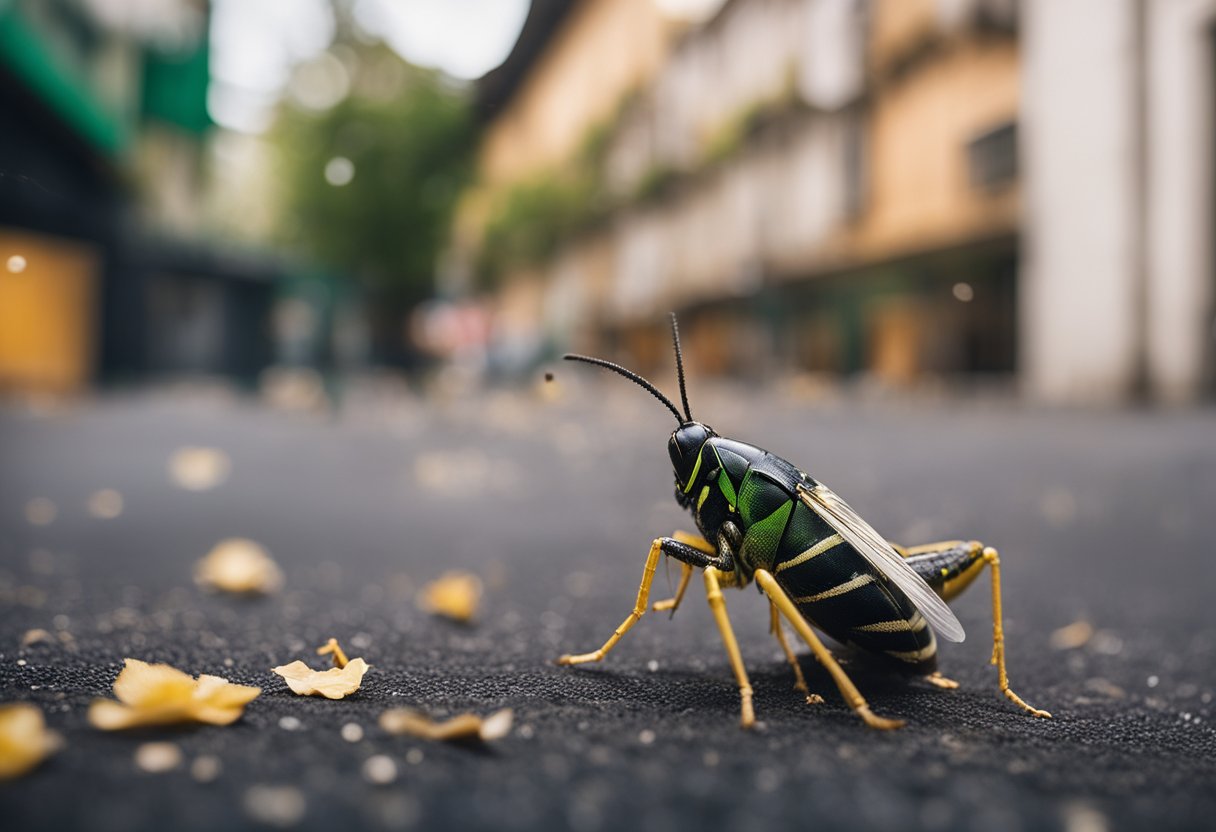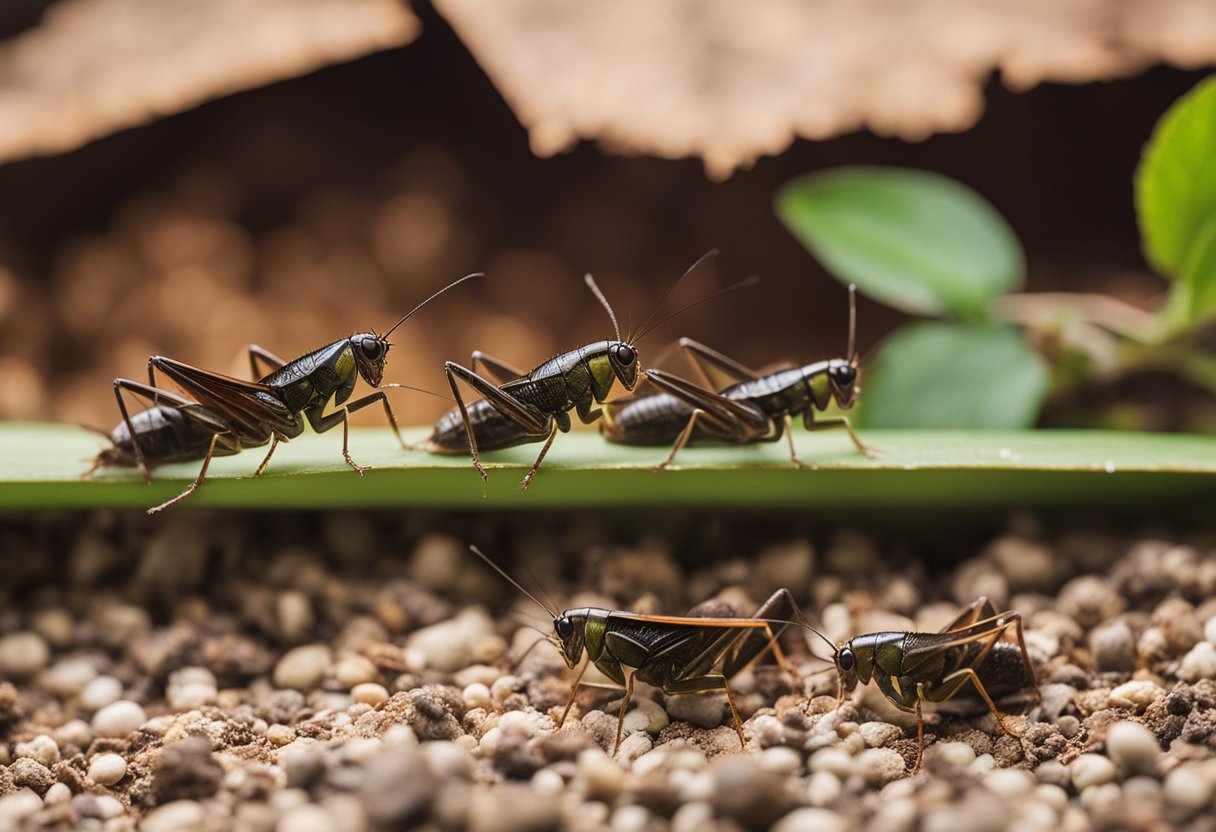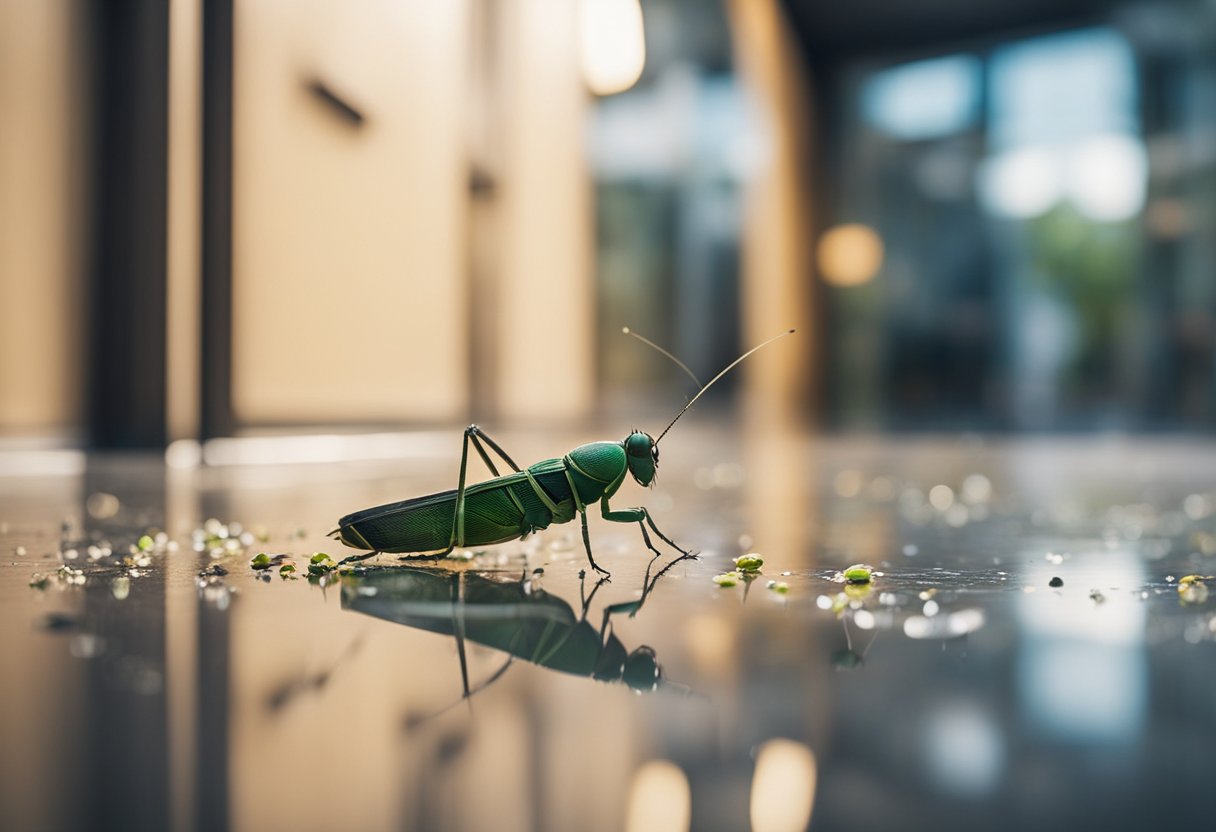Cricket infestations in commercial properties are a common issue that can go unnoticed until it becomes a significant problem. Recognizing the signs early is critical for maintaining a sound business environment and preventing potential damage. Crickets can pose not just a nuisance with their incessant chirping, but they can also be indicative of larger sanitation or structural concerns within a property.

In commercial settings, cricket infestations can lead to reputational damage, especially in industries that necessitate high levels of cleanliness, such as food services or healthcare. Identifying the presence of crickets involves being aware of their behavior, such as spotting crickets near light sources or hearing their distinctive chirping noises, especially at night. Signs like these should prompt immediate investigation and action.
Effective management of cricket infestations entails understanding their attraction to warm, moist environments that are often found in undisturbed areas of a building. Routine inspections and maintenance are essential in deterring cricket populations. This includes sealing entry points, ensuring proper waste disposal, and minimizing excess moisture throughout the property, strategies that are as preventative as they are responsive.
Identifying a Cricket Infestation
Commercial property managers need to be aware that identifying a cricket infestation involves vigilant observation of physical signs, distinctive sound patterns, and property damage.
Physical Indicators of Crickets
Cricket presence can be confirmed by spotting the actual insects. House crickets are typically a light brown color, about three quarters of an inch in size, with three darker bands across their heads, large hind legs, wings, and long antennae. Evidence of their presence includes finding crickets dead or alive within the property.
Sounds and Chirping Patterns
Chirping is a hallmark of cricket activity, especially at night. This sound is produced by certain cricket species as part of mating rituals. The noise level and frequency can indicate the extent of an infestation; a higher rate of chirping may suggest a larger population of pests.
Cricket Damage Observations
Cricket infestations can lead to noticeable damage due to their feeding habits. Properties may show signs of:
- Chewed fabric edges: Large holes in materials such as wool, cotton, or silk can distinguish cricket damage from other pests.
- Property damage: Surfaces such as walls and floors might have small scratch marks or droppings that are black and cylindrical in shape.
Managers should act promptly upon these observations to control the infestation.
Cricket Biology and Behavior

Cricket infestations in commercial properties can largely be attributed to their adaptive biology and behavior. Understanding these aspects is crucial for effective management.
Cricket Species and Environment
There are numerous species of crickets, but house crickets (Acheta domesticus) and mole crickets are most commonly encountered in commercial spaces. House crickets thrive in warm environments and are often found near buildings, as they provide shelter and consistent food sources. Mole crickets, on the other hand, prefer outdoor environments and are skillful burrowers.
Common Habitats:
- House Crickets: Indoors in warm areas, crevices, behind walls
- Mole Crickets: Soil, gardens, turf areas
Cricket Life Cycle and Reproduction
Crickets undergo incomplete metamorphosis, beginning their life as an egg, then moving through the nymph stages before reaching adulthood. An adult female can lay hundreds of eggs in her lifetime. These eggs hatch into nymphs, which resemble miniature adults without wings. The nymphs mold several times before reaching full maturity and developing wings and the ability to mate.
Life Cycle Stages:
- Egg: Laid in soil or warm areas indoors
- Nymph: Wingless, smaller version of the adult
- Adult: Fully grown, winged, capable of mating and producing songs
Feeding Habits and Diet
Crickets are omnivorous insects that feed on a wide variety of organic materials, including plants, smaller insects, and food waste. Their strong mandibles allow them to break down fibrous materials. In commercial properties, their diet typically consists of readily available food scraps, making them quite the pests.
Dietary Preferences:
- Plant matter: Stems, leaves, and roots
- Animal matter: Dead insects and other arthropods
- Food waste: Leftovers and crumbs in commercial settings
By recognizing the biology and behavior of crickets, pest control professionals can tailor their approach for managing these nocturnal insects efficiently and prevent further infestations in commercial properties.
Prevention and Control Strategies
In addressing cricket infestations in commercial properties, it is critical to implement comprehensive prevention and control strategies. These tactics are designed to deter and eliminate crickets, maintaining a cricket-free environment through consistent application and monitoring.
Sealing Entry Points and Reducing Moisture
To thwart crickets from entering commercial spaces, sealing entry points is paramount. One should inspect the property for any cracks, gaps, or holes in walls, foundations, and around windows or doors. Sealing these with caulk or weather stripping can block access points for crickets. Reducing moisture is another critical step, as crickets are attracted to damp environments. It’s essential to address areas with excessive moisture, ensure proper drainage away from the building, and repair leaky pipes or faucets.
Natural and Chemical Control Methods
A combination of natural and chemical methods can be effective in cricket control. For natural prevention, maintaining a clean environment is key; vacuuming regularly can remove crickets and their eggs. Use of baits and sticky traps can capture crickets without resorting to chemicals. For chemical treatments, products containing boric acid can be useful. However, if a severe infestation persists, professional pest control may need to apply targeted pesticides that are safe for use in a commercial setting.
- Natural Control: Regular vacuuming, use of baits and sticky traps, and introducing natural predators.
- Chemical Control: Utilizing boric acid and professional pesticide treatments when necessary.
Implementing Monitoring Measures
To ensure the effectiveness of prevention and control efforts, implementing regular monitoring is advised. This involves routine checks of potential entry points, inspection of trap catches, and assessment of moisture levels in soil and plants around the property. By keeping records of these inspections, commercial property managers can identify patterns and react promptly to signs of cricket activity.
- Regular Inspects: Check traps and baits, assess soil and plant moisture, and inspect sealed entry points.
- Record Keeping: Maintain detailed logs of cricket activity and control measures to track progress and patterns.
Professional Cricket Pest Control
When addressing cricket infestations in commercial properties, professional pest control services offer tailored assessment and treatment plans, followed by strategic post-treatment prevention measures. They utilize their expertise to provide effective solutions geared towards the unique challenges that crickets present.
Assessment and Treatment Plans
A thorough inspection is the first step professionals take to identify the extent of the cricket problem. They look for:
- Active Crickets: Visible presence of live crickets within the property.
- Cricket Sounds: Persistent chirping, especially at night.
- Physical Damage: Marks on fabrics, furniture, and other materials.
- Droppings: Small black or brown pellet-like waste.
Upon completing the assessment, pest control experts develop a treatment plan that may include a combination of the following:
- Insecticide Application: Targeted treatments in infested areas with products safe for indoor use.
- Bait Stations: Strategically placed to attract and poison crickets.
- Exclusion Techniques: Sealing off entry points to prevent future access.
Professionals ensure the treatment plan is comprehensive, addressing both the current infestation and the property’s specific characteristics.
Post-Treatment Prevention
After treatment, pest control services provide guidance on long-term prevention strategies, such as:
- Environmental Management: Regular maintenance like mowing lawns and removing weeds to detract crickets.
- Moisture Control: Addressing damp areas to make the environment less appealing.
- Structural Repairs: Sealing gaps around windows, doors, and other potential entry points with weather stripping or caulk.
Regular follow-up by professionals can verify the success of the treatment and the effectiveness of the prevention measures, maintaining a cricket-free environment for the business.
Health Risks and Property Damage

Understanding the impact of a cricket infestation on commercial properties is crucial for maintaining a safe and intact environment. This section discusses the specific ways in which crickets can harm inventory and affect human health.
Impact on Commercial Properties and Inventory
Crickets are known to feast on a variety of materials found in commercial settings. Field crickets, for example, can damage merchandise by chewing on products, especially those composed of fabrics and paper. Their chewing habits lead to the degradation of items that are integral to business operations. Mole crickets, on the other hand, primarily affect outdoor commercial spaces like lawns and golf courses by burrowing through the soil, eating roots and foliage, and creating unsightly tunnels that can ruin the aesthetic and structural integrity of landscaped areas.
Stockrooms and warehouses need to be vigilant, as crickets tend to hide in cracks and crevices, compromising the condition of stored goods. A specific concern arises with produce in grocery stores or food-related businesses. Here, crickets can contaminate food items, leading to loss due to spoilage.
To deter crickets, placing sticky traps in basements and garages, cleaning up waste, and sealing potential entry points can help prevent an infestation. Regular inspections for signs like chirping, droppings, and visible damage to inventory can be crucial.
Assessing and Addressing Health Concerns
Crickets themselves are not known to be direct vectors of diseases, but they can carry bacteria such as salmonella and E. coli, posing potential health risks if they come into contact with food surfaces or products. Their droppings and shed exoskeletons can exacerbate allergies and asthma, especially in sensitive individuals.
It is essential for commercial property owners to employ proper pest control measures to mitigate these health concerns. This can include environmental management to reduce cricket-friendly conditions and professional pest management strategies. The use of chemical bait and targeted insecticides should be carefully considered to avoid harming non-target species and to minimize the use of potentially harmful chemicals in areas frequented by people.
Regular pest assessments and maintaining a clean environment are key steps in protecting the health of employees and customers, as well as safeguarding the business’s reputation and bottom line.

